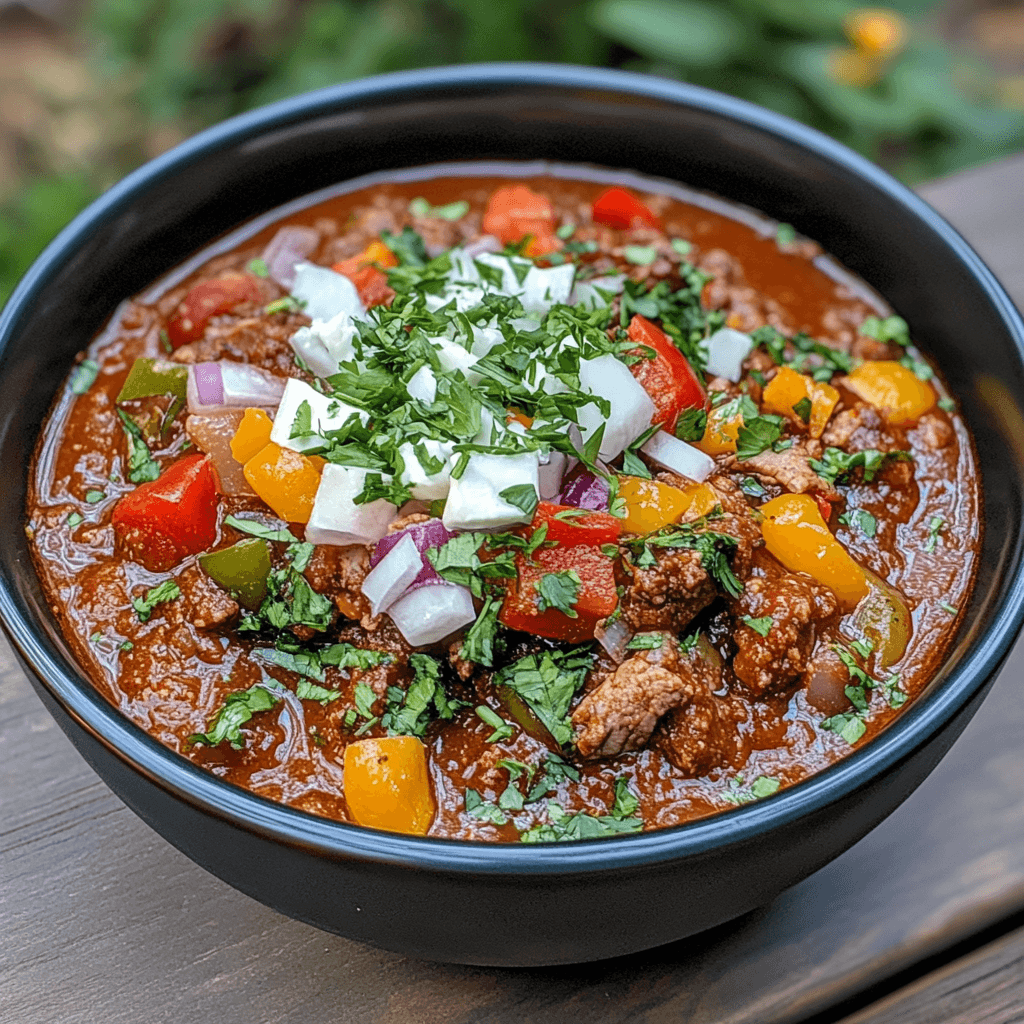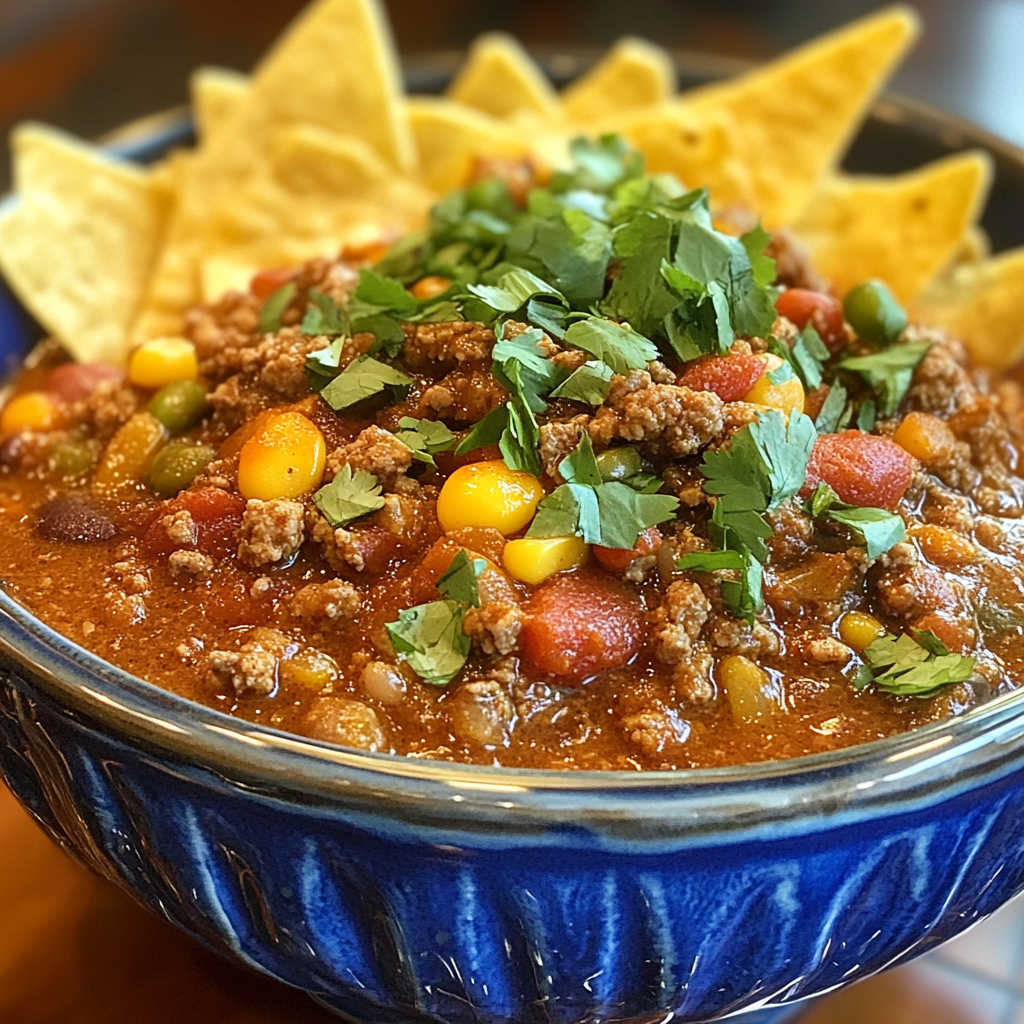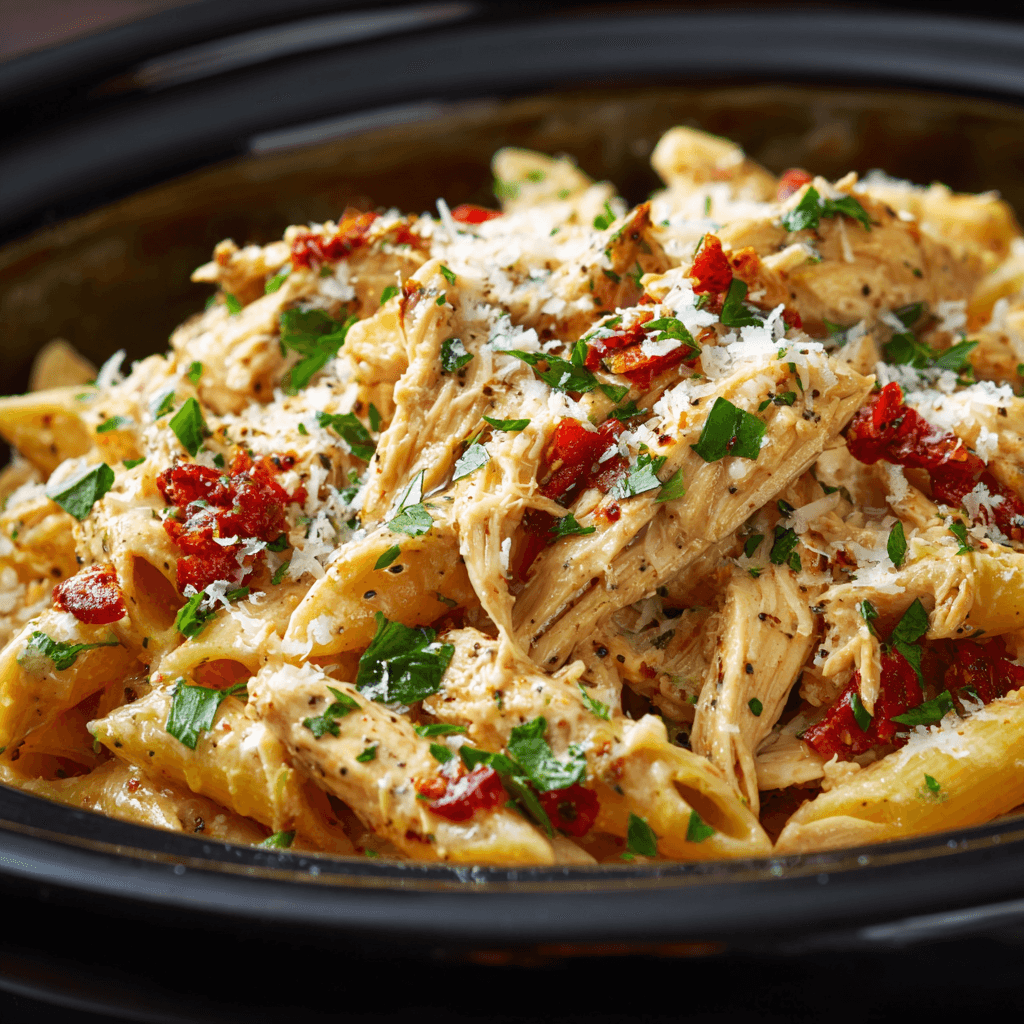Introduction to Smoked Chili
What is Smoked Chili?
A smoked chili recipe is the perfect way to transform a classic dish into a bold, smoky masterpiece. By infusing meats, vegetables, and spices with rich, smoky flavors, this chili variation elevates traditional comfort food to a gourmet level. Whether you’re preparing it for a cozy night in or a crowd-pleasing event, this smoked chili recipe delivers unmatched depth and complexity, making it a favorite among chili lovers.
Why Smoking Takes Chili to the Next Level
The smoking process enhances chili by adding complexity and a unique depth of flavor. Smoking meat before adding it to the chili creates tender, juicy bites with a subtle smokiness that permeates the entire dish. Additionally, using smoked spices like smoked paprika or chipotle peppers adds layers of flavor that a traditional chili simply can’t match. It’s a technique that elevates the dish, making it unforgettable for chili enthusiasts and food lovers alike.
The History of Chili and Smoking
Origins of Chili Recipes
Chili, or “chili con carne,” originated in the Americas, blending indigenous and Spanish culinary traditions. It became especially popular in Texas, where it evolved into a hearty, spice-laden stew often made with beef, beans, and chili peppers. Over time, regional variations emerged, each adding unique touches to this beloved dish.
The Art of Adding Smoke to Dishes
The practice of smoking food dates back thousands of years, used initially as a method of preservation. Over time, it became a culinary art form, celebrated for its ability to impart rich, complex flavors to meats, vegetables, and even spices. Combining the techniques of smoking and chili-making represents a perfect marriage of tradition and innovation, creating a dish that honors its roots while embracing modern culinary trends.
Choosing the Right Ingredients
Best Meats for Smoking
The choice of meat is critical for smoked chili, as it forms the foundation of the dish’s flavor profile. Popular options include:
- Beef Brisket: A classic choice for its tender, flavorful qualities when slow-smoked.
- Pork Shoulder: Adds a juicy, rich texture that complements smoky flavors.
- Smoked Sausage: Enhances the chili with a savory, spiced bite.
- Chicken Thighs: A lighter option that still absorbs smoke beautifully.
- Ground Beef or Turkey: Pre-smoke these meats for a subtle smoky base.
Essential Spices for a Smoky Flavor
To achieve the signature smoky flavor in chili, incorporate these key spices:
- Smoked Paprika: A versatile spice that adds a rich, smoky depth.
- Chipotle Peppers in Adobo: Provide heat and a robust smokiness.
- Cumin: Enhances the earthy tones of the chili.
- Cocoa Powder or Coffee: Adds subtle bitterness and complexity that pairs well with smoky notes.
- Chili Powder: A staple for spice and warmth, blending well with smoky elements.
With the right ingredients and techniques, smoked chili becomes a dish that’s as satisfying as it is flavorful, offering a bold twist on a timeless classic.
Preparing the Chili Base
Using Fresh Tomatoes vs. Canned
- Fresh Tomatoes: If you prefer a bright, natural flavor, fresh tomatoes are an excellent choice. Roast them for a slightly smoky flavor before blending. They add freshness to your chili but require extra prep time.
- Canned Tomatoes: For convenience and a consistent texture, canned tomatoes (diced, crushed, or whole) are ideal. Opt for fire-roasted canned tomatoes to enhance the smoky flavor naturally.
Each option has its benefits, so choose based on your time and flavor preferences. A combination of fresh and canned can also strike a balance.
Picking the Right Beans and Veggies
- Beans: Kidney beans, black beans, and pinto beans are the most popular choices for chili. To complement the smoky flavors, consider adding a mix of beans for texture and taste. If you’re making a bean-free chili, skip them entirely.
- Veggies: Onions, bell peppers, and garlic are essential aromatics. For a smoky twist, roast your vegetables beforehand. You can also include poblano peppers or chipotle peppers for added depth and mild heat.
The Role of Smoke in Chili
How Smoking Enhances Flavor
Smoking adds complexity and richness to chili by infusing the meat and other ingredients with a deep, earthy flavor. The low and slow cooking process not only tenderizes the meat but also allows the smoky essence to permeate the entire dish. Smoked chili offers a multidimensional flavor profile that balances the sweetness of tomatoes, the spice of chili peppers, and the heartiness of the meat.
Choosing the Right Wood Chips
The type of wood chips used for smoking can dramatically affect the flavor of your chili:
- Hickory: Adds a robust, slightly sweet, and bacon-like flavor.
- Mesquite: Provides a bold, earthy flavor, perfect for beef chili.
- Applewood: Offers a mild, fruity flavor that complements chicken or pork.
- Cherrywood: Delivers a subtle sweetness and pairs well with a variety of meats.
Experiment with combinations of wood chips to create a unique flavor that suits your preferences.
Equipment You’ll Need
Smokers and Grills
- Dedicated Smokers: Ideal for infusing intense smoke flavor, electric, pellet, or charcoal smokers offer precise control over temperature and smoke levels.
- Grills with a Smoking Box: Traditional grills can be adapted for smoking by using a smoking box or aluminum foil packet filled with wood chips.
- Kettle Grills: Versatile and budget-friendly, these grills can double as smokers with the proper setup.
Alternative Methods for Smoking Indoors
If you don’t have outdoor smoking equipment, try these indoor alternatives:
- Stovetop Smokers: Compact and effective, stovetop smokers work well for small batches of meat or vegetables.
- Liquid Smoke: A quick and easy option to add a smoky flavor to your chili without a smoker. Use sparingly to avoid overpowering the dish.
- Smoked Ingredients: Incorporate pre-smoked items, such as smoked paprika, smoked salt, or chipotle peppers, to mimic the smoky effect.
With the right preparation and equipment, you can achieve a smoky, rich chili that delights your taste buds, whether cooking outdoors or indoors.
Step-by-Step Cooking Process
Preparing the Meat
- Select and Prep the Meat: Choose cuts like brisket, pork shoulder, or chicken thighs. Trim excess fat, and season generously with a spice rub, including smoked paprika, cumin, and salt.
- Marinate for Extra Flavor: Marinate the meat overnight to enhance its smokiness and ensure the spices penetrate deeply.
Smoking the Ingredients
- Preheat the Smoker: Heat your smoker to 225°F (107°C) and prepare the wood chips of your choice (hickory, mesquite, or applewood).
- Smoke the Meat: Place the seasoned meat in the smoker and cook for 2-4 hours, depending on the cut, until it reaches a tender, smoky perfection.
- Smoke the Vegetables: Add onions, peppers, and tomatoes to the smoker for a smoky base. Smoke them for 30-60 minutes.
Combining for Simmering Perfection
- Sauté Aromatics: In a large pot, sauté garlic, onions, and peppers in olive oil until soft and fragrant.
- Add Smoked Ingredients: Shred or dice the smoked meat and combine it with the smoked vegetables.
- Build the Base: Add tomatoes, beans (if using), and your choice of broth or beer. Stir well to combine.
- Simmer: Allow the chili to simmer on low heat for 1-2 hours, stirring occasionally, until all the flavors meld together.

Smoking Techniques for Chili
Low and Slow Smoking
This method ensures tender meat and deeply infused smoky flavors:
- Maintain a Consistent Temperature: Keep your smoker at 225°F (107°C).
- Use a Water Pan: Place a water pan in the smoker to keep the meat moist and prevent it from drying out.
- Time and Patience: Allow the ingredients to cook slowly for the best results.
Cold Smoking Ingredients
For ingredients that don’t require cooking (like peppers, spices, or cheese), use the cold smoking method:
- Keep the Temperature Below 90°F (32°C): This avoids cooking while imparting smoke flavor.
- Short Smoking Sessions: Smoke these ingredients for 30 minutes to an hour.
- Use a Smoking Box: A separate cold smoking box helps control the process and protect delicate ingredients.
Popular Smoked Chili Variations
Smoky Vegetarian Chili
- Base Ingredients: Use smoked vegetables such as tomatoes, bell peppers, and zucchini as the foundation.
- Protein Options: Add smoked tofu, lentils, or black beans for a hearty, meat-free option.
- Spices: Enhance with smoked paprika and chipotle powder for depth.
Smoked Brisket Chili
- Meat: Smoked brisket is the star of this variation, shredded or chopped for rich, meaty bites.
- Flavor Profile: Add dark beer or coffee for an earthy undertone that complements the brisket.
- Optional Toppings: Garnish with shredded cheese, sour cream, and green onions.
Spicy Smoked Sausage Chili
- Sausage Selection: Use smoked andouille, chorizo, or kielbasa for a spicy kick.
- Add Heat: Incorporate fresh jalapeños or habaneros for an extra layer of spice.
- Balanced Flavors: Pair with beans and tomatoes to mellow the heat while maintaining complexity.
With these techniques and variations, you can craft a smoked chili recipe that stands out for its bold flavors and gourmet appeal.
Serving Suggestions
Ideal Side Dishes for Smoked Chili
- Cornbread: The subtle sweetness and crumbly texture of cornbread perfectly balance the smoky and spicy flavors of chili.
- Grilled Vegetables: Serve smoked chili with a side of grilled zucchini, bell peppers, or asparagus to complement its rich flavors.
- Rice or Quinoa: A bed of rice or quinoa helps soak up the smoky chili, adding heartiness to the meal.
- Tortilla Chips: Use crunchy tortilla chips for dipping or as a base for loaded chili nachos.
- Green Salad: A light, tangy salad with vinaigrette offers a refreshing contrast to the deep flavors of smoked chili.
Topping Ideas for Extra Flavor
- Shredded Cheese: Cheddar, Monterey Jack, or smoked Gouda melts beautifully over hot chili.
- Sour Cream or Greek Yogurt: Adds creaminess and helps tame the spice.
- Fresh Herbs: Sprinkle chopped cilantro, parsley, or green onions for a fresh, vibrant finish.
- Pickled Jalapeños: A tangy, spicy addition for those who love extra heat.
- Avocado: Sliced or diced avocado provides a creamy, cooling contrast.
- Crushed Tortilla Chips: Add crunch with a handful of crushed tortilla chips.
How to Store and Reheat Smoked Chili
Freezing Tips for Retaining Smoky Flavor
- Cool Completely: Allow the chili to cool to room temperature before freezing to avoid ice crystals forming.
- Use Airtight Containers: Store chili in freezer-safe containers or heavy-duty freezer bags, removing as much air as possible.
- Portion Wisely: Freeze in meal-sized portions for easy reheating.
- Label and Date: Clearly label the container with the date to ensure the chili is used within 3 months for the best flavor.
Reheating Without Drying Out
- Stovetop Method: Reheat the chili in a pot over low heat, stirring occasionally. Add a splash of broth or water if the chili thickened during storage.
- Microwave Method: Use a microwave-safe container and heat the chili in short intervals, stirring between each to ensure even warming.
- Slow Cooker: For a hands-off option, reheat the chili in a slow cooker on low heat, adding a small amount of liquid if needed.
Health Benefits of Smoked Chili
High-Protein Options
Smoked chili is an excellent source of protein, especially when made with meats like brisket, pork shoulder, or chicken. Beans, tofu, or lentils in vegetarian variations also provide plant-based protein. Protein is essential for muscle repair, energy, and overall health, making smoked chili a hearty, nutritious choice.
Nutritional Value of Smoked Ingredients
- Smoked Meats: Rich in protein and iron, smoked meats also provide essential amino acids.
- Smoked Vegetables: Smoking enhances the flavor of vegetables without adding calories, retaining their vitamins and antioxidants.
- Spices: Ingredients like smoked paprika and chipotle peppers not only add depth but also deliver antioxidants and metabolism-boosting benefits.
By combining wholesome ingredients with the rich, smoky flavor, smoked chili offers a meal that’s both satisfying and nutritious.
Frequently Asked Questions
Can chili be smoked?
Yes, chili can absolutely be smoked! Smoking chili involves slow-cooking the ingredients—such as meat, vegetables, and spices—over wood chips or charcoal to infuse the dish with a rich, smoky flavor. You can smoke the entire chili in a smoker or add smoked ingredients like brisket, smoked peppers, or smoked paprika to achieve a similar effect. This method adds depth and complexity to traditional chili recipes.
What is the best wood to smoke chili?
The choice of wood depends on the flavor profile you want to achieve. Popular options include:
- Hickory: Delivers a strong, bacon-like smoky flavor.
- Mesquite: Provides a bold, earthy taste, great for beef-heavy chili.
- Applewood: Adds a mild, sweet smokiness, perfect for pork or chicken-based chili.
- Cherrywood: Offers a subtle sweetness that pairs well with vegetables and meats.
Experimenting with wood types or mixing them allows you to create a unique flavor tailored to your taste.
What gives chili a smoky flavor?
Several elements can contribute to a smoky flavor in chili:
- Smoked Meats: Ingredients like smoked brisket, sausage, or pork add a natural smokiness.
- Smoked Spices: Smoked paprika, chipotle peppers in adobo, or smoked salt enhance the flavor without requiring a smoker.
- Smoking the Chili: Cooking chili in a smoker directly infuses all the ingredients with wood smoke for an authentic smoky taste.
- Liquid Smoke: A few drops of liquid smoke can mimic the effect of traditional smoking, though it should be used sparingly.
How to make smoked chillies?
Smoked chilies, like chipotle peppers, are dried and smoked chili peppers commonly used to add heat and depth to dishes. Here’s how to make them:
- Choose Peppers: Select ripe red jalapeños or similar chili peppers.
- Prepare the Smoker: Preheat your smoker to 180–200°F (82–93°C) and choose a wood type like hickory or applewood.
- Clean and Dry the Peppers: Wash the peppers and pat them dry. Leave them whole or slice them in half for faster drying.
- Smoke the Peppers: Place the peppers on the smoker grates and smoke for 6-12 hours until they dry out and develop a rich smoky flavor.
- Store Properly: Allow the peppers to cool, then store them in an airtight container. They can also be ground into powder for use as a seasoning.
Smoked chilies are versatile and can be used to enhance a variety of dishes, including chili recipes, marinades, and sauces.
Troubleshooting Smoking Issues
Avoiding Overpowering Smoke
Too much smoke can overwhelm the chili and make it taste bitter or acrid. Here’s how to avoid this issue:
- Choose Mild Woods: Opt for lighter woods like applewood or cherrywood for a subtle flavor. Avoid using too much mesquite or hickory, which can be overpowering.
- Control Smoke Intensity: Maintain a thin, blue smoke rather than thick, billowing smoke. This indicates clean burning.
- Monitor Smoking Time: Limit the smoking duration, especially for ingredients like vegetables, which absorb smoke quickly.
Fixing Bland Chili
If your chili lacks flavor, consider these fixes:
- Add Smoked Ingredients: Stir in smoked spices like paprika or chipotle powder to boost the smoky depth.
- Balance the Seasonings: Check for adequate salt, pepper, and spices. A small pinch of sugar or a splash of vinegar can help balance flavors.
- Reduce and Concentrate: Simmer the chili uncovered for a while to concentrate its flavors.
- Incorporate Acidic Elements: Fresh lime juice or a spoonful of tomato paste can brighten and enhance the taste.
Best Drinks to Pair with Smoked Chili
Beer Pairings
- Dark Beers: Stouts and porters complement the smoky, rich flavors of chili with their roasted malt notes.
- IPA (India Pale Ale): The hoppy bitterness of an IPA balances the chili’s spice and smokiness.
- Amber Ales: A versatile choice, amber ales have enough body and sweetness to complement both mild and spicy chili.
- Lagers: Crisp lagers provide a refreshing contrast to the hearty, smoky chili.
Wine Suggestions
- Red Wines:
- Syrah/Shiraz: Its bold, peppery flavors pair beautifully with smoky and spicy chili.
- Zinfandel: A jammy red wine with a touch of spice that complements rich meats and smoky notes.
- Rosé: A dry rosé offers a lighter option, balancing chili’s spice with its fruity acidity.
- Sparkling Wine: The effervescence cuts through the richness and refreshes the palate.
Non-Alcoholic Options
- Iced Tea: Sweetened or unsweetened iced tea pairs well with chili’s heat and smoky flavors.
- Sparkling Water with Citrus: A splash of lime or orange adds brightness and cleanses the palate.
- Lemonade: The tartness of lemonade contrasts nicely with the boldness of smoked chili.
- Root Beer: Its creamy, slightly sweet profile complements the smoky, spicy chili.
Pairing your smoked chili with the right drink enhances the meal, balancing its flavors and creating a satisfying dining experience.
Here’s a paragraph incorporating internal linking opportunities for an article about a smoked chili recipe:
To elevate your smoked chili recipe, consider exploring techniques highlighted in The Ultimate Guide to Smoked Meatloaf Recipe, which provides insights into achieving the perfect smoky flavor in meat-based dishes. For a unique twist, you might draw inspiration from The Ultimate Brisket Chili Recipe, which showcases the use of smoked brisket for a rich and savory chili base. Additionally, if you’re seeking a spicier approach, check out The Ultimate Cowboy Chili Recipe, a hearty option perfect for fans of bold and smoky flavors.
This structure seamlessly integrates relevant internal links as rich anchor text to enhance the article’s SEO and user navigation.
What’s the best way to store leftovers?
Keep leftovers in an airtight container in the fridge for up to 4 days. Reheat in the microwave or oven until hot and bubbly. For food safety tips, refer to USDA guidelines on leftovers .
Conclusion
Why Smoked Chili is a Game-Changer for Chili Lovers
Smoked chili takes the classic comfort dish to new heights, offering a depth of flavor that’s unmatched by traditional chili recipes. The infusion of smoky notes from carefully selected woods, combined with the richness of smoked meats and spices, creates a culinary experience that is both bold and memorable. Whether you prefer a mild, savory version or a spicy, smoky punch, smoked chili is endlessly customizable to suit your taste. For chili lovers looking to elevate their meals, smoked chili is a game-changer that brings together the best of tradition and innovation in every bite.






2 thoughts on “The Ultimate Smoked Chili Recipe”
Comments are closed.